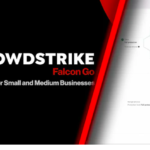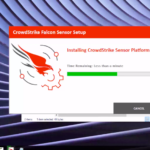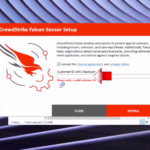Applying for a commercial loan can be an intimidating process, but it doesn’t have to be. With the right preparation and knowledge, you can successfully navigate the commercial loan application process. In this complete guide, we will cover everything you need to know to apply for a commercial loan for your small business, from choosing the right lender to putting together a winning loan application.
Choosing the Right Lender
Major Banks
The big nationwide banks like Bank of America, Wells Fargo, and Chase are certainly options for a commercial loan. They offer competitive rates and a wide variety of loan products. However, they tend to have stricter approval criteria and can be less flexible than smaller lenders. As large corporations, they may not offer the personalized service some small business owners prefer.
Small and Community Banks
Local banks and credit unions often have more flexibility than major banks and may be more invested in your community. They know the local business landscape better. However, they may have higher rates or fees. Smaller lenders also tend to have lower maximum loan amounts.
Alternative and Online Lenders
In recent years, alternative lenders like Kabbage, OnDeck, and Fundbox have entered the scene. They provide fast loan decisions and funding, but often charge higher rates and fees. Similarly, you can now apply for commercial loans online through various fintech companies. Just be aware that online lenders may pass your data on to third parties.
Choosing What’s Right for You
Consider your specific business needs, loan amount, and priorities in customer service when choosing a lender. Getting loan quotes from multiple lenders is wise to compare rates.
Types of Commercial Loans
There are various types of commercial loans available. Some of the most common options include:
Term Loans
This is the most basic type of commercial loan. You borrow a lump sum and repay it over a set period in equal monthly installments. Term loans require collateral and are ideal for major investments like equipment purchases.
Lines of Credit
A line of credit provides access to revolving credit, where you only pay interest on what you use. Lines of credit offer flexibility since you can draw funds as needed up to your credit limit. They are good for smoothing out cash flow.
Accounts Receivable Financing
With this option, you get a cash advance on outstanding invoices and then pay back the lender as clients pay. It improves cash flow if clients pay slowly.
Equipment Financing
With equipment financing, the lender buys the equipment you select and then leases it to you for a fixed term. At the end of the term, you can buy the equipment for a small fee.
What Lenders Look For
When reviewing your commercial loan application, lenders will analyze these key factors:
Business Financials
This includes tax returns, profit and loss statements, balance sheets, accounts receivable aging, and other documents that convey your business’s financial health.
Personal Credit Scores
While weighing your business’s finances foremost, most lenders will also check your personal credit score and history.
Collateral
For some loans, the lender will require pledged collateral to secure the loan in case of default. Common collateral includes real estate, equipment, or machinery.
Business Plan
Particularly for startups or large loans, having a detailed business plan can help get your loan approved.
Loan Purpose and Projections
Lenders want to see that the loan will be used for a sound business purpose and that repayment is realistic based on financial projections.
Getting Your Documents in Order
Pulling together a commercial loan application requires extensive documentation. Being organized will make the process smoother.
Financial Records
- Several years of federal tax returns
- Current profit and loss statement
- Balance sheet and accounts receivable aging report
- Projected profit and loss statement
- Projected balance sheet
- Personal financial statement
Legal Records
- Business license
- Business lease or mortgage
- Organization documents like articles of incorporation
- EIN confirmation letter
- Business bank statements and cancelled checks
- Legal agreements/contracts
Collateral Records
- Property deeds
- Vehicle titles
- Equipment purchase records
- Appraisals
- Details on existing loans
Crafting Your Business Plan
For any sizable or startup loan, lenders will expect a solid business plan that conveys your company’s unique strengths and your plans for growth and profitability. Key sections to include are:
Executive Summary
Briefly summarize your business, loan purpose, financial projections, and competitive advantage. This is your chance to grab interest.
Company Overview
Describe your company’s history, current status, legal structure, products/services, and target market.
Market Analysis
Research your industry trends and target demographics. Outline your competitors and your competitive edge.
Management Team
Introduce your key team members and their qualifications. Highlight any gaps that outside consultants or new hires could fill.
Financial Plan
Provide past financial statements, tax returns, collateral assets, and projected financials including expected revenues, costs, profits, and cash flow.
Loan Purpose and Use of Funds
Explain exactly why you need the loan and how the funds will be used in your operations.
Repayment Plan
Show the lender how you will generate the cash flow to repay the loan on schedule.
Submitting Your Application
Once your package is complete, the next step is submission. Follow any specific delivery instructions from the lender. Be responsive to any follow-up questions or requests for clarification.
Following Up on Your Commercial Loan Application
Don’t just submit your application and wait passively. Regularly check in with your loan officer for updates on your application status. Be prepared to make any needed adjustments, such as providing additional documents. Show that you are eager for approval and committed to building a positive lending relationship.
Getting Approved – What’s Next?
Congratulations! Your commercial loan was approved. There are still some important steps before you get funded:
Review and Sign the Loan Agreement
Make sure to carefully read the full loan agreement and disclosures before signing. Verify that the terms match what you were expecting.
Provide Updated Financials
The lender may request current financial statements and tax returns in case anything significant has changed.
Purchase Any Required Insurance
The lender probably requires proof of property insurance or other policies before finalizing funding.
Arrange for Collateral
If collateral is a condition of your loan, work with the lender to sign any security agreements and transfer titles.
Set Up Payment Processes
Work with the lender to establish auto payments from business accounts to repay the loan on time each month.
Common Mistakes to Avoid
When applying for a commercial loan, keep these missteps in mind:
- Providing sloppy or incomplete documents
- Not thoroughly researching lenders to find the best fit
- Failing to make a compelling case for loan approval
- Neglecting to follow up and advocate for your application
- Making unrealistic financial projections
- Providing unrealistic repayment plans
- Waiting until desperate for cash to apply
Frequently Asked Questions
What credit score is needed to get a commercial loan?
While every lender has their own criteria, most look for a personal credit score of at least 650-680 to approve a commercial loan. For larger loans, a score over 720 is ideal.
How long does it take to get approved for a commercial loan?
Approval can take 1-3 weeks with a typical lender. Online lenders and community banks may have faster turnaround while large banks process more slowly.
What documents are needed for a commercial loan?
Typical documents include 2-3 years of tax returns, personal and business financial statements, profit and loss statements, projections, business formation docs, collateral records, and a business plan.
Can I get a commercial loan with bad credit?
It is possible but difficult. Options include finding a lender specializing in bad credit borrowers, bringing on a creditworthy cosigner, or providing more collateral.
How much will I get approved for?
The amount you can borrow depends on factors like revenue, assets, credit score, time in business, collateral, and the standards of the specific lender.
Should I choose a variable or fixed rate loan?
A variable rate is initially lower but adds risk. Fixed rates mean consistent payments but start higher. Choose variable if rates are low and fixed if high and volatile.
Conclusion
Applying for commercial loans involves preparation and persistence, but the reward is crucial financing to grow your business. This guide covers the key steps in selecting lenders, compiling an organized application, crafting a winning business plan, following up diligently, and avoiding missteps. With hard work and the right knowledge, securing a commercial loan is an achievable milestone in scaling your company.










